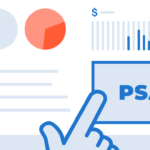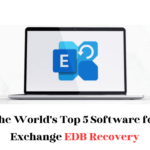Modern business environments have made procurement processes more complex making it necessary to get creative in managing them effectively. One of these solutions is RFP automation software. The process helps to save time while reducing errors by automating the creation, distribution and evaluation of RFPs thus simplifying the procurement process. Organizations can improve their procurement efficiency, better their supplier relationships and attain quality outcomes through the utilization of RFP automation software. This post discusses various aspects regarding RFP automation software including its features, benefits and role in vendor performance management as well as highlights how a robust source-to-contract (S2C) solution can further optimize procurement activities.
Key features of RFP automation software
RFP Automation Software has been equipped with several key features that are meant to simplify and improve the purchasing process. One feature is that it has standard templates for creating RFPs which ensure requests are consistent and complete at all times. These templates may be tailored according to particular requirements thereby facilitating faster communication on expectations from suppliers. In addition, the tool means that Request for Proposal (RFPs) can be sent to a set list of suppliers in an automated manner, bypassing the entire process of having to send proposals manually.
Moreover, there is also a feature for tracking and managing responses automatically. The software has a central platform where all these answers can be gathered together, reviewed and compared. This expedites the evaluation period as well as the availability of every response for reference in future. Moreover, RFP automation software often includes tools for collaborative evaluation, allowing multiple stakeholders to review and score responses, facilitating more informed decision-making.
Benefits of implementing RFP automation software
Several benefits accompany the implementation of RFP automation software by organizations. First and foremost, it significantly decreases the time and effort required for managing RFP processes. Automation eliminates repetitive tasks and allows procurement teams to dedicate their time towards strategic activities like supplier relationship management and market analysis which enhance organizational effectiveness. This leads to quicker project timelines and expedited procurement cycles because businesses become more efficient in acquiring materials.
Another option is RFP automation software which improves accuracy and compliance as well. Standardizing templates and automating processes will eliminate mistakes and absences, making sure that RFPS carry all necessary information. Besides increasing proposal quality, this approach ensures compliance with internal rules as well as adhering to external regulations. Moreover, it can be used to establish an audit trail that follows every action done thereby improving accountability and openness during procurement.
Additionally, supplier engagement is improved through RFP automation software. It streamlines the procurement process making it professional at the same time. This leads to better supplier experiences that motivate more suppliers to participate as well as submit high-quality proposals. Consequently, this enhances competition which may result in better pricing and terms for the organization. Moreover, it allows instant communication and collaboration with suppliers hence building a stronger relationship leading to effective negotiation.
Improving supplier performance management
Procurement relies heavily on supplier performance management for it to succeed as an organization or company. Ensuring effective supplier performance management ensures that suppliers fulfil their contractual obligations by delivering the required quality and value desired by customers. Some RFP automation software is great in this process as it provides tools and features that help in continuous monitoring and evaluation of supplier performance.
With such RFP automation software, organizations can set out the performance metrics and expectations within the RFP itself. This ensures that from the outset suppliers know what they will be evaluated against. After contract award, this software enables the capture of key performance data as well as the generation of periodic reports for ongoing tracking of performance. These reports provide insights into supplier’s performance, identifying areas of excellence and opportunities for improvement.
The role of RFP automation software in S2C solutions
S2C solution is a source-to-contract process ranging from identification and sourcing suppliers through contract negotiations to supplier management. A good S2C solution should therefore include a well-functioning RFP automation system which simplifies the procurement operations overall by streamlining the entire RFP processes.
In the sourcing phase, RFP automation software assists in pinpointing reliable potential suppliers. It permits organizations to quickly make proposals and deliver several copies to ensure all relevant suppliers are considered. An evaluation process that is completely carried out by automated tracking and management of responses results in better-informed sourcing decisions.
The software helps the organization and suppliers to collaborate and communicate during the contract negotiation phase. It affords one place for document sharing, negotiation of terms as well and signing contracts. This enhances contract negotiation by reducing time spent on negotiations; hence agreements are reached faster and in great efficiency.
After awarding a tender, supplier performance management cannot do without RFP automation software. Data concerning performance is collected and analysed to monitor compliance with the terms of the agreement while examining the general worthiness of inputs from dealers. These suppliers’ obligations can only be met if they are constantly watched over because of their quality level delivery as well as price according to their contract conditions.
RFP automation software future trends
Several new trends should be part of RFP automation software development as technology progresses, which will further improve its capacity and effect on the procurement process. Machine Learning (ML) and Artificial Intelligence (AI), for instance, are increasingly being integrated into this space. Large data can be used by these technologies to pull out patterns and insights to support decision-making. For instance, an AI system fitted with ML algorithms can forecast supplier performance using historical statistics thus allowing companies to make better sourcing choices.
Conclusion
RFP automation software has revolutionized the procurement process to make it much better than ever before. Automating RFP creation, distribution, and evaluation processes, helps save time and reduce mistakes while enhancing supplier involvement. In addition to this, it forms an important part of the continuous monitoring and evaluation of supplier performance by suppliers’ organizations. When plugged into a complete source-to-contract (S2C) solution suite RFP automation software optimizes procurement operations all through from sourcing up to contract management.
With advancing technology, RFP automation software is predicted to integrate advanced features such as artificial intelligence (AI), machine learning (ML), blockchain chain and cloud solutions among others thereby further improving the capacity of this tech tool even in the area of procurement. Several benefits accrue to any business organization using RFP automation software; these include increased efficiency levels, improved relations with suppliers as well and better results for procurement projects.








